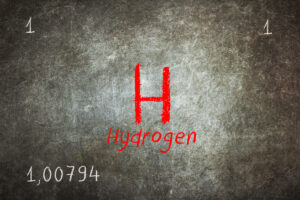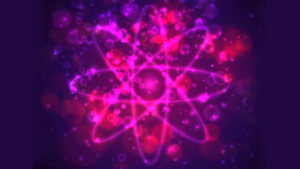Thanks to the negative effects of climate change, researchers have, for decades, searched for energy sources cleaner than fossil fuels. One source of energy that has received a lot of attention is solar power — which uses the sun as its source of fuel. Of course, on cloudy days that source of fuel is greatly diminished and at night it doesn’t exist at all. As a result, researchers have long dreamed of creating a fusion reactor that could produce energy, around the clock, using the same method the sun does. Journalist Nick Lavars reports, “For nearly a century, scientists have been tantalized by the prospect of attaining an inexhaustible source of energy through nuclear fusion. Unfortunately, engineering a controlled environment where atomic nuclei can continuously fuse under extreme pressure and temperature to produce energy that we can capture is very difficult, but that doesn’t mean exciting advances aren’t being made.”[1]
Resources, like coal and oil, are unevenly distributed across the globe. Inevitably, that has meant individuals, companies, and governments have been locked in competition (if not outright warfare) to gain control of those resources. If fusion reactors become a reality, they could be a force for peace and stability around the globe since their source of fuel is virtually inexhaustible. There are other reasons to pursue nuclear fusion reactors as well. Lavars notes, “Fusion … would produce no long-lasting nuclear waste, with the necessary materials able to be recycled within 100 years. There is also no danger of a meltdown or nuclear accident because it relies on high-temperature reactions that cool within seconds when disrupted. And because these reactions use relatively small amounts of fuel, there is no danger of them being harnessed to produce nuclear weapons.” He goes on to describe four potential paths to nuclear fusion. They are:
Path 1. Tokamaks. Tokamaks use a magnetic confinement system for nuclear fusion. Lavars explains, “These consist of a neat series of coils placed around a torus-shaped reactor, where a plasma is heated to millions of degrees with the help of a strong internal current. The idea is to hold the plasma in place for long enough for the fusion of nuclei to occur. The first tokamaks were designed in the 1950s, and in 1991 the Joint European Torus (JET) tokamak in the UK became the first device to achieve a controlled release of fusion power.” He notes that early experiments “fell well short of the net gain energy generation needed to make nuclear fusion feasible.” Despite advances, Lavars reports, “The energy breakeven point for fusion remains elusive.” As discussed below, that breakeven point may have been crossed.
Path 2. Stellarators. Stellarators also create magnetic-confinement fusion. Lavars explains, “Like tokamaks, stellarators are designed to confine streams of plasma in a looping chamber with the help of magnetic coils, but with some key differences. Rather than a nice symmetrical doughnut shape, a stellarator sends its plasma around in irregular circles that twist and turn with an incredibly complex series of magnetic coils. It seems counterintuitive, but this actually creates more stability in the plasma owing to differences in the internal current.”
Path 3. Inertial Confinement. Magnetic confinement is not the only fusion approach being explored. According to Lavars, inertial confinement uses “very precisely targeted laser or ion beams to rapidly heat up a pellet of fuel.” The problem with this approach, Lavar explains, is “that these reactions take place in the blink of an eye. For the technology to be applied to a practical power plant, it would need to mature from short-lived, one-off reactions to something that produces a steady supply of energy, like a burning fire.”
Path 4. Z-pinch Inertial Confinement. The Z-pinch approach, Lavars explains, “uses the electromagnetic field that is generated within the plasma itself” as a confinement mechanism. “Z-pinch has been called the dark horse of the nuclear fusion race because, since its inception in the 1950s, it has promised a far simpler configuration than tokamaks or stellarators. But like those devices, it too has been prone to instabilities in the plasma, which escapes the magnetic field lines and forms problematic bulges.”
The Breakthrough Announcement
On Sunday, energy reporter Tom Wilson broke the news, “US government scientists have made a breakthrough in the pursuit of limitless, zero-carbon power by achieving a net energy gain in a fusion reaction for the first time.”[2] A formal announcement is expected today from Secretary Jennifer Granholm, head of the U.S. Department of Energy. Wilson reports that the breakthrough was achieved by researchers from the Lawrence Livermore National Laboratory using the inertial confinement fusion method explained above. In Livermore’s experiment, a tiny pellet of hydrogen was bombarded by the world’s biggest laser creating the plasma that achieved a net energy gain.
As exciting as that news is, technology reporters Evan Halper and Pranshu Verma explain, “The resources needed to recreate the reaction on the scale required to make fusion practical for energy production are immense. More importantly, engineers have yet to develop machinery capable of affordably turning that reaction into electricity that can be practically deployed to the power grid.” And, as Matthew Hole, a nuclear fusion expert and research fellow at Australian National University, told Lavars, “The question is how do you translate something that is intrinsically pulsed into something that is intrinsically steady state?” With large-scale development perhaps decades away, Halper and Verma as another question, “[Can the technology] be perfected in time to make a dent in climate change?” The question itself casts doubt on there being a positive answer. Nevertheless, they conclude, “Researchers and investors in fusion technology hailed the breakthrough as an important advancement.”
Concluding Thoughts
Wilson notes, “Although many scientists believe fusion power stations are still decades away, the technology’s potential is hard to ignore. Fusion reactions emit no carbon, produce no long-lived radioactive waste and a small cup of the hydrogen fuel could theoretically power a house for hundreds of years.” Because there is such a tremendous upside to fusion technology, I want to discuss, in Part Two of this article, whether there is really a future for fusion reactors and, if there is, how far away that future may be.
Footnotes
[1] Nick Lavars, “Four ways to fusion: The pros and pitfalls of our nuclear power pursuit,” New Atlas, 3 April 2021.
[2] Tom Wilson, “Fusion energy breakthrough by US scientists boosts clean power hopes, Financial Times, 11 December 2022.
[3] Evan Halper and Pranshu Verma, “U.S. to announce fusion energy ‘breakthrough’,” The Washington Post, 11 December 2022.





